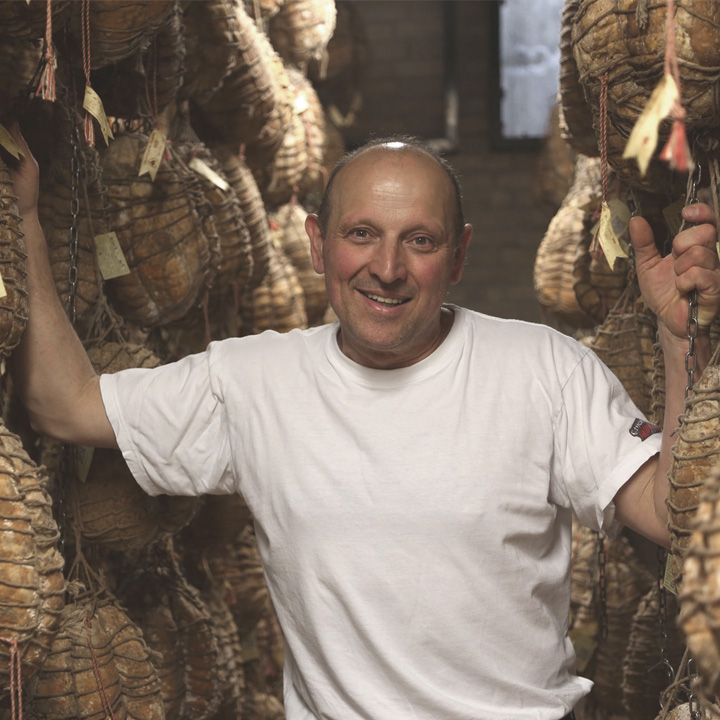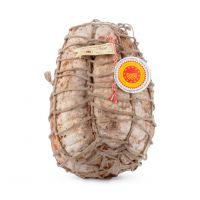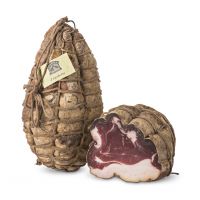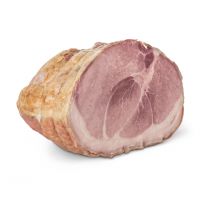
The product
Culatta arrosto
Culatta Arrosto is the cooked version of Culatello
Code:
78404
Country of origin:
Italy - Emilia Romagna
Weight:
3,5 kg approx
Minimum order:
1 piece
| Description | Culatta produced with a single cut of back leg of selected pigs, born, bred and slaughtered in Italy, in Emilia-Romagna and Lombardy regions |
|---|---|
| Appearance | It is the cooked version of Culatello, when sliced it shows an intense pink colour |
| Taste | Sweet and delicate, it is processed with a delicate bouquet of aromas that enhance the taste of the meat; pleasently soluble in the mouth |
| Our selection | When we visited Ernestino, he told us some of the differences among the small producers like him and the industrial producers. One of these particularly impressed us: Ernestino need to buy the whole mezzena and use all the meat, as in the past, with no waste, whereas big producers buy just the cuts they need e.g. for Culatello. A choice that goes also in the direction of sustainability. One more reason, for us, to support the handcraft job of small artisans like Ernestino. |
| Suggestions | We suggest to slice it with knife, not too thin; in the area of production it is traditionally warmed up and eaten with 'gnocco fritto' (fried dough) |
| Weight | 3,5 kg approx |
|---|---|
| Packaging | Vacuum packed the half piece |
The producer
Crocedelizia - Soragna (PR) - Emilia Romagna

Why we chose them
The history of Crocedelizia is the story of family Carraglia that renews the handcraft tradition of the norcinis of Bassa Parmense area, preserving the
knowledge and the taste of local charchuterie.
Heirs of the ancient profession of "masalen" - people who used to raise pigs and transform the meat in the ancient farmhouses of Bassa Parmense
area -. Ernestino Carraglia founded his laboratory in Soragna, in the province of Parma, to produce and mature the most typical salumi of Parma area,
like Culatello and Spalla Cotta.
Ernestino works according his long family tradition and matures his products in a cellar made with terracotta red bricks under the laboratory.
When we visited him, Ernestino told us some of the differences among the small producers like him and the industrial producers. One of these
particularly impressed us: Ernestino need to buy the whole mezzena and use all the meat, as in the past, with no waste, whereas big producers buy
just the cuts they need e.g. for Culatello. A choice that goes also in the direction of sustainability. One more reason, for us, to support the handcraft
job of small artisans like Ernestino.
From the same producer



